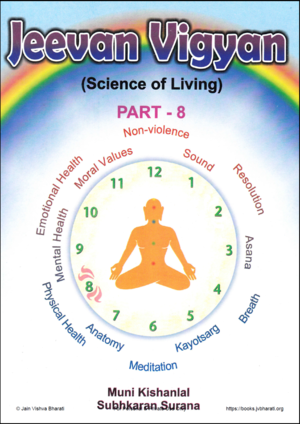DARSHANKENDRA: A SCIENTIFIC PROFILE AND PROCEDURE FOR PREKSHA
Darshan Kendra is associated with the Pituitary Gland. This gland is situated in the central part of the human brain. It is at its lower end, and at the rear of the main part of nose. It remains suspended in a sort of a hammock touching the lower part of the brain. Its size is comparable to a pea.
It has two compartments—the front and the rear. The front end of the Pituitary Gland is considered to be chief administrator of the entire Internal Secretion Glands System. The front end of Pituitary Gland secretes 12 varieties of hormones which control several notable activities of human life. No organ or portion of human body can function without these hormones. Secretions of hormones from the front end of this gland activate or impede the functions of Thyroid, Adrenal Gland, Cortex and Gonads.
Secretions from the rear end of the Pituitary Gland are actually manufactured in the Hypothalamus. From there, these secretions are passed on to the rear end of the Pituitary Gland for storage. From here they are distributed to the other parts of body after some modifications.
THE PHILOSOPHICAL ASPECT
Philosophers have specified two elements in human body. The first element is—consciousness (also known as the Jeeva). The second element is— unconsciousness (also known as the padartha). Both these elements (consciousness and unconsciousness i.e. JEEVA and PADARTHA) are essential for the existence of the body. Consciousness constructs the body with the Padartha as its basic material. But the material from the body cannot function without consciousness. At the same time, consciousness by itself cannot accomplish anything unless it has a body to activate itself. Human body can be further classified into two - (i) the physical form of body and (ii) the abstract element within it. Both these elements are complementary to each other. Consciousness manifests itself through the medium of physical and abstract elements of human body.
THE ENDOCRINE SYSTEM
When we accept the concept of a body consisting of physical as well as abstract elements, the logical progression of this concept leads us to the question, "Is there any medium of mutual communication between these two?" There has to be a system within the body which is capable of activating its physical aspect and guiding, regulating and coordinating its functions. This administrative nature of function is executed by this Endocrine System. This System is the medium of communication between the physical and abstract body elements. Hormones secreted by this System, having chemical properties, function like regulatory computers and transformers.
Endocrine Glands System manufactures as well as distributes chemical fluids all over the body. These fluids effect the thought-process, behaviour and activities of human beings. These hormones formulate special have advocated that these secretions should be achieved and purified thought meditation. Purity of thought-process has become not only desirable but most essential for peace and prosperity of the human race and its perpetuation. It is quite a different matter as to who attributes how much importance to activate a particular kendra and tries to transform his or her disposition.
An illustration would be quite relevant for the confirmation of what has been stated earlier. A particular posture and gesture is assumed by people belonging to different faiths and religions while engaged in the act of worship and prayer. Men assume the sitting position by folding the legs at knees, clap their hands, bow their heads and touch the ground with the forehead. Followers of Islam while performing the Namaaz, Christians while praying in a church, the Santana dharmi, Buddhists and Jains while performing the Deva-Vandana or Guru-Vandana assume this posture.
When one bends forward from the waist in order to touch the ground with the forehead, the posture exerts pressure on the Adrenal Glands, which are situated on the cortex of the two kidneys. These glands secrete certain hormones that generate egoistic thoughts. But posture adopted at the time of bowing before one's devotional object, refines these secretions. As a result humble and devotional thoughts are generated in the mind of the devotee.
The custom of bowing in the process of worship has been continuing since time immemorial and is prevalent even today. In ancient times, people had absolute faith in the great sages and they followed their precepts without any question. That is why they dictated only what was required to be implemented.
But scientific knowledge has made modern man inquisitive. Therefore, before embarking upon any endeavour it has become essential to give a scientific explanation to everything. But there are certain hazards involved in such discussions. Often people indulge in it and do not progress beyond mere exchange of theoretical ideas. These discourses consume so much time that many things which are required to be practised simply get side tracked.
ADVANTAGES
According to spiritual astrology, Darshan Kendra is influenced by the planet. Through the Preksha of Darshan Kendra man stops to stray aimlessly. The Sadhaka discovers his designated path. He begins to foresee future events. Darshan (Extra sensory perceptions) and their development. It also develops the capacity of taking correct decisions. It enables a person to exercise control over excitement and urges. The Sadhaka gets a disciplined, patient and serious disposition. He can complete his life-journey with a unique sense of divine pleasure.
Lot of importance has been given to Darshan Kendra in the context of Chaitanya Kendra Preksha. By continuous practice the Third Eye can also be activated. The Third Eye is directly connected with the Antardrishti..
EXERCISE
- What is the scientific profile of Darshan Kendra?
- Describe the scientific aspect of the functions of the Pituitary Gland.
